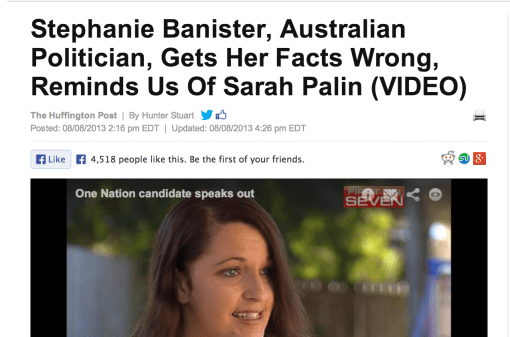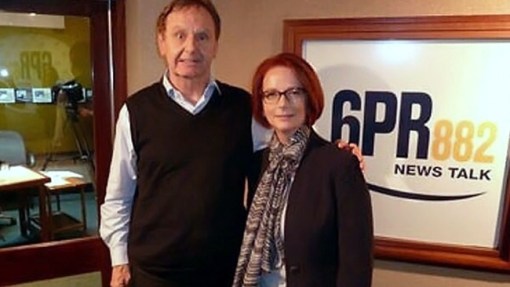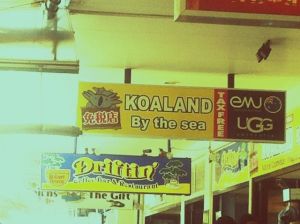If the addition of social media to a broadcast is not intended as a distraction to the main game, why is that so often the outcome?
This is something I have wondered as I look at Australia’s attempts and those by networks around the world.
I thought it was self-evident that viewer opinions, when integrated into a television programme, are there to enhance the primary content. But perhaps the pendulum has already swung too far.
Why is it that many shows that have tried out social media on-air are not using innovative techniques, not conjuring up their own clever use adaption of this new community, but instead throw up some clunky graphics or even use the frustrating ‘stop/read a tweet/continue with show’ method.
Exactly who benefits from that?
Poor implementation risks offending both sides. It shows those on social networks that you don’t understand how the stream flows relentlessly on, while those who’ve never signed up for Facebook or Twitter are peeved that their show has new awkward, trendy interruptions.
Good implementation can keep viewers hooked and boost ratings – The Voice in the US is seeing a great response from their use hosts and judges live-tweeting and responding personally to viewers.

One reason TV shows should and are trying to bring social media into the foreground is fear. It’s the fear of any switched on executive producer that the social media stream will become more entertaining than the show itself. People will watch their second screen (mobile devices) more than their first (TV).
Certainly, there’s no better influence for you to switch channels than if all your friends and those you follow are tweeting about #TheVoice.
Hence, broadcasters all over the world are battling with how to bring the social stream into the live TV event. They need to show viewers they are listening to their views, but some integrations of Twitter, especially, are wearing very thin.
I like the UFC‘s approach – use social media to build up hype for the event a week out. Have your main talent interacting with viewers on various platforms throughout the day and then following the event. They understand that owning the conversation is more about taking people in behind the wall of the TV screen than it is the chance to display a highlight reel of the sharpest or fastest tweeters.
Sadly, I think Australia’s one-time leader in this area is now dragging the chain.
QandA is making a mockery of what has become known as Social TV. The show, which can still command large audiences, has long held the torch for social media integration in our country.
Several programs still limit their social network integration to a back-announce of their hashtag as the show ends. (Bit late guys!)
(Lateline is the main offender there, but, I should say, I like the show’s latest idea to give a political or topical personality the reigns as ‘Guest Tweeter’. If you’re going to tell people to “join the conversation”, it makes sense to lead it. This limits carping and provides a loose thread people can join if they wish. If not, your hashtag is just an invitation for everyone to ‘Shout! Now!’)
But back to our beloved QandA.
Each week, an increasingly silly list of tweets are flipped up on the screen.
These days, it’s hard to spot any comment that adds to the discussion. Intelligent questions? Fact-checking? It’s more a procession of punch-lines that would never be appropriate to be read out loud on the show.
It’s more a ticker of sniping, witty retorts and clever word plays that often denigrate a guest. Cardinal Pell was a good example. As was John Howard…

It’s a technique that’s not showing the best side of Twitter, nor is it helping boost engagement for the audience watching at home.
Viewers, as a result, must now tolerate these tweets interrupting the actual debate, on top of Tony Jones’s regular interruptions of panelists (something he’s long been known for). Who benefits? No one but the wise guys who – no doubt – congratulate each other on their televised tweets the next day over the ad agency water cooler.
Imagine the real-life equivalent; You’re in a pub trying to enjoy the footy but you can’t hear the commentary because all the biggest smart-arses in the room have lined up to whisper their witty interjections in your ear.
Tweets that flash up and then disappear only adds to the distraction. (It’s very hard not to look at them. I tried hard and only skipped two. Tell me how you go.)
How about a ticker that continues scrolling in the bottom third – that way I can dip-in if I wish?
But how about some more creative uses of social media?
Get your hosts to tweet LIVE on air and ask for responses.
Give characters in a drama series real-life accounts, updated mid-week, to add to the storyline – and intrigue. (Packed to the Rafters recently started a character blogging – an interesting move.)
Contests can be easily managed via social media. Tweet your trivia answer to this hashtag… Find and LIKE our hidden Facebook page for the next clue… Start a Pinterest and name a Board after our show (Microsoft and Harrods have each tried something similar)
Philosopher Alain de Botton said that the main challenge of smartphones is for us to be more interesting than they are – to stop people’s eyes drifting back to their tiny screen.
The same goes for TV.
There are many ways we can take this Australia. Let’s not leave it as it is. Please?
Pretty soon, my second screen will be much more interesting than my first.
-33.867139
151.207114














